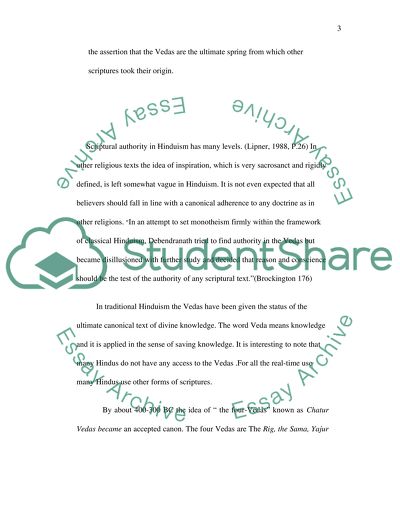Cite this document
(Scriptural Authority in Hinduism Case Study Example | Topics and Well Written Essays - 1750 words, n.d.)
Scriptural Authority in Hinduism Case Study Example | Topics and Well Written Essays - 1750 words. Retrieved from https://studentshare.org/philosophy/1540327-to-what-extent-does-the-philosophy-of-the-upanishads-represent-a-continuation-of-the-vedic-tradition-answer-with-particular-reference-to-the-following-key-con
Scriptural Authority in Hinduism Case Study Example | Topics and Well Written Essays - 1750 words. Retrieved from https://studentshare.org/philosophy/1540327-to-what-extent-does-the-philosophy-of-the-upanishads-represent-a-continuation-of-the-vedic-tradition-answer-with-particular-reference-to-the-following-key-con
(Scriptural Authority in Hinduism Case Study Example | Topics and Well Written Essays - 1750 Words)
Scriptural Authority in Hinduism Case Study Example | Topics and Well Written Essays - 1750 Words. https://studentshare.org/philosophy/1540327-to-what-extent-does-the-philosophy-of-the-upanishads-represent-a-continuation-of-the-vedic-tradition-answer-with-particular-reference-to-the-following-key-con.
Scriptural Authority in Hinduism Case Study Example | Topics and Well Written Essays - 1750 Words. https://studentshare.org/philosophy/1540327-to-what-extent-does-the-philosophy-of-the-upanishads-represent-a-continuation-of-the-vedic-tradition-answer-with-particular-reference-to-the-following-key-con.
“Scriptural Authority in Hinduism Case Study Example | Topics and Well Written Essays - 1750 Words”. https://studentshare.org/philosophy/1540327-to-what-extent-does-the-philosophy-of-the-upanishads-represent-a-continuation-of-the-vedic-tradition-answer-with-particular-reference-to-the-following-key-con.


